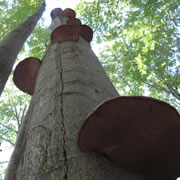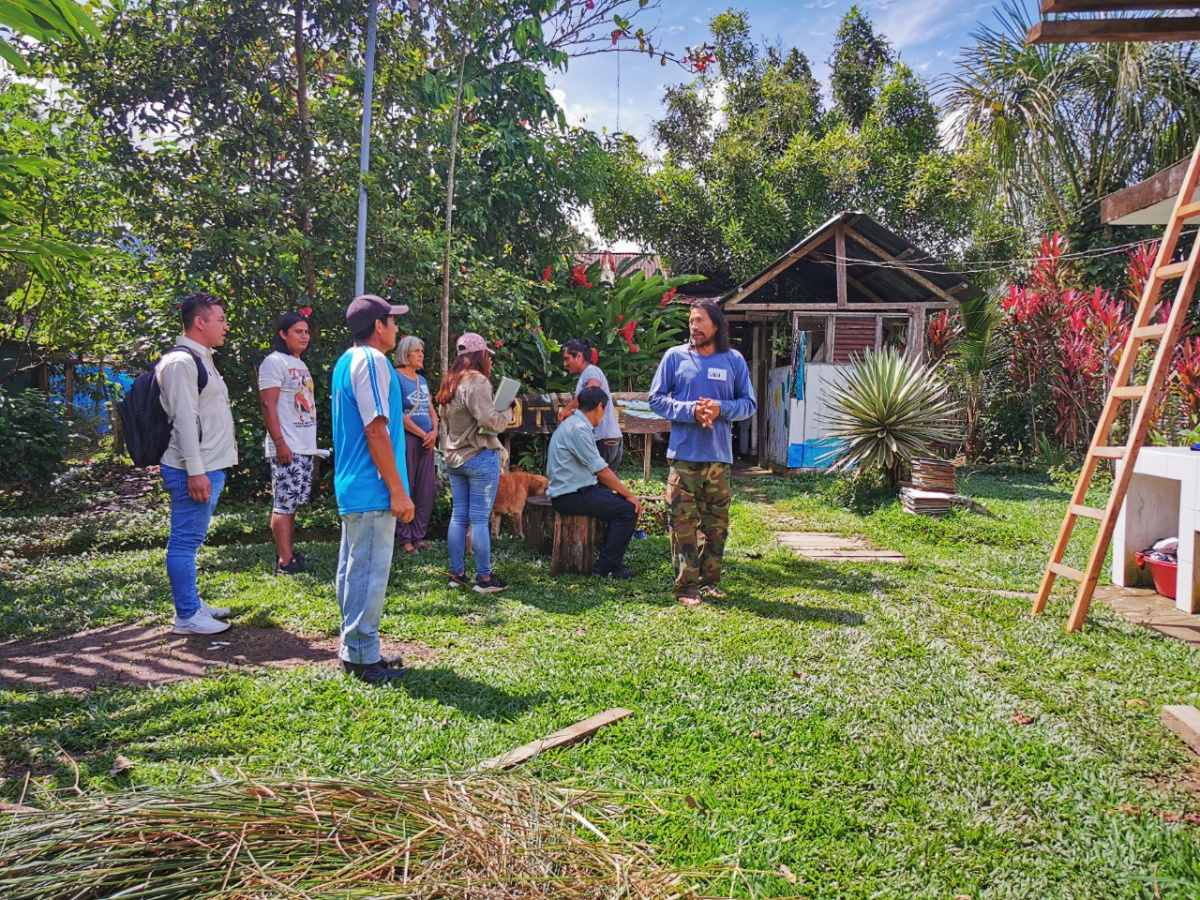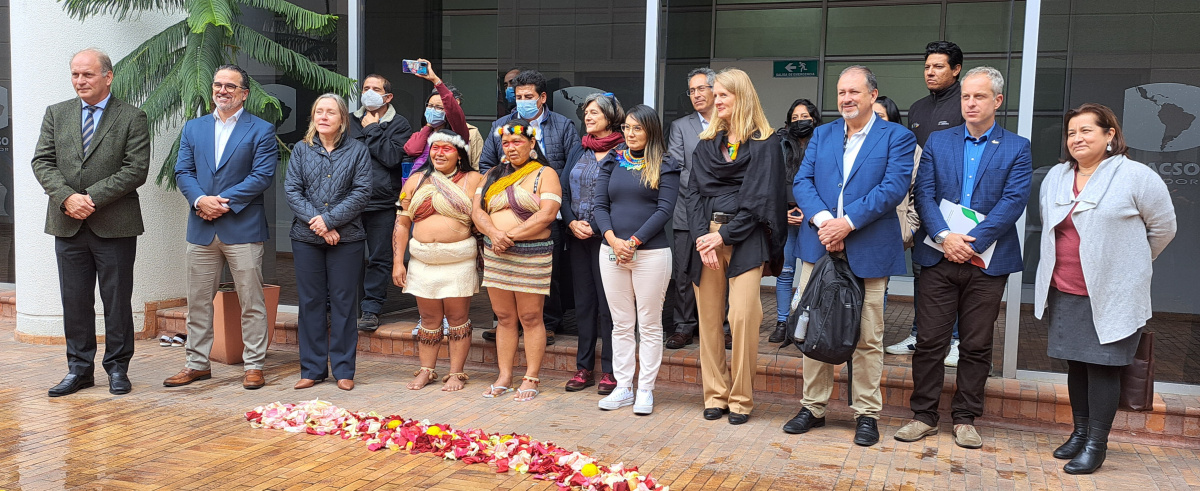A further three new sites inscribed on World Heritage List
Following the recommendations of the World Conservation Union, a further three new sites have been inscribed on the UNESCO World Heritage List

Photo: David Mihalic
Primeval beech forests in Slovakia and the Ukraine, Teide National Park in Tenerife and Lopé National Park in Gabon were added to the prestigious World Heritage List today.
After a year-long rigorous evaluation process, the World Conservation Union (IUCN), which is the technical advisory body on natural heritage, presented its recommendations to the World Heritage Committee, currently meeting in Christchurch, New Zealand.
Primeval Beech Forests of the Carpathians, Slovakia and Ukraine
The primeval beech forests of the Carpathians represent an outstanding example of undisturbed, complex temperate forests and associated ecological processes. In 2003, IUCN evaluated a first nomination of these forests from Slovakia and recommended transnational cooperation in the conservation of the forests that once stretched across Europe. The transnational serial site inscribed now includes key remnants of these forests in both Slovakia and the Ukraine and is the first natural World Heritage site for the Ukraine. The delegations of both countries expressed their gratitude to the committee and IUCN for this positive decision in Christchurch.
David Sheppard, Head of the IUCN delegation in Christchurch, said: “The primeval forests of the Carpathians are indispensable to understanding the evolution and ecology of beech forests, which are globally significant given their wide distribution in the Northern Hemisphere.”
Teide National Park, Spain
Teide National Park is situated on the island of Tenerife in the Canary Islands. The site includes impressive and diverse volcanic features and landscapes concentrated in a spectacular setting. The park is home to the world’s third tallest volcano, ranging from the seafloor to the 3,781 m Mount Teide, Spain’s highest peak. It is of global importance in providing diverse evidence of the geological processes that underpin the evolution of oceanic islands. The area is thus a major centre for international research with a long history of influence on geology and geomorphology, especially through the work of von Humboldt, von Buch and Lyell. This has made Mount Teide a significant site in the history of volcanology.
Ecosystem and Relic Cultural Landscape of Lopé-Okanda, Gabon
Lopé-Okanda, inscribed today for both its natural and cultural values, represents a very unusual boundary between dense and well-conserved tropical forest and savannah environments. It includes Lopé National Park, one of the most outstanding areas in terms of biodiversity in the Congo Rainforest, and provides an important refuge to many threatened species of large mammals, such as gorillas and elephants. The site protects an important record of biological evolution over the last 15,000 years in the forest-savannah transition zone.
Lopé-Okanda is also an important archaeological centre for Central Africa with extensive remains of Stone Age and Iron Age sites, and large numbers of stone engravings. It is the first World Heritage site for Gabon and only the 25th mixed site on the World Heritage List. The Gabonese delegation in Christchurch welcomed this great news and thanked the international non-governmental organizations that have been supporting them in the conservation of this site.
Allen Putney, IUCN’s World Commission for Protected Areas Vice-Chair for World Heritage, said: “Lopé-Okanda joins the small circle of World Heritage sites that are inscribed for both their outstanding natural and cultural values, such as New Zealand’s Tongariro National Park, Peru’s Machu Picchu and South Africa’s Drakensberg Park. This is a great achievement.”
Jungfrau-Aletsch-Bietschhorn, Switzerland
On the recommendation of IUCN, the committee also extended the current Jungfrau-Aletsch-Bietschhorn World Heritage site in Switzerland, increasing its area by over 50%. The site is the most glaciated part of the European Alps, containing Europe’s largest glacier, and provides an outstanding record of the geological processes that formed the High Alps. Following the initial inscription of the site in 2001, Switzerland developed through an exemplary participatory process a management plan for the site and surrounding region, and the Swiss delegation in Christchurch said they are willing to share their lessons learned in this process with others.
After today’s decisions by the 31st session of the World Heritage Committee, the World Heritage List now includes 167 natural sites and 25 mixed (cultural and natural) sites. The Committee continues to meet in Christchurch until 2 July and is also considering the inscription of cultural sites on to the World Heritage List.
For yesterday’s inscriptions on the World Heritage List see IUCN’s press release at: link
Notes to editors
The IUCN delegation present in Christchurch, New Zealand, will be reporting back from the meeting on a regular basis between 23 June and 2 July. Regular updates can be found on www.iucn.org.
More information on the World Heritage Convention and the List of World Heritage sites can be found at: whc.unesco.org.
The World Heritage List currently includes 830 sites in 184 States Parties: 644 cultural, 165 natural and 24 mixed (cultural and natural) sites.
IUCN, whose independent advisory role is enshrined in the text of the World Heritage Convention, has been involved in the Convention since its inception, having played a major part in drafting the text with UNESCO in 1972. IUCN undertakes technical evaluations of the natural values of the sites nominated for inscription on the World Heritage List and has evaluated several hundred nominated sites. Further information on IUCN’s World Heritage work is available at: web
Additionally, each year IUCN reports to the World Heritage Centre on the conservation status of certain natural and mixed World Heritage sites under threat. IUCN’s assessments on what is happening in World Heritage sites are derived from a variety of sources: IUCN members, indigenous peoples groups, the scientific community, experts from IUCN commissions and concerned individuals and organizations.
For more information or to set up interviews, please contact:
In Gland, Switzerland:
Sarah Halls, Global Media Relations Officer, The World Conservation Union (IUCN), Tel: +41 22 999 0127, e-mail: sarah.halls@iucn.org, Web: www.iucn.orgIn Christchurch, New Zealand:
Bastian Bomhard, World Heritage Officer, The World Conservation Union (IUCN), Tel: +41 79 716 5401, e-mail: bastian.bomhard@iucn.org, Web: www.iucn.orgPhotos available on request from sarah.halls@iucn.org
About the World Conservation Union (IUCN)
Created in 1948, the World Conservation Union (IUCN) brings together 84 States, 108 government agencies, 800 plus NGOs, and some 10,000 scientists and experts from 181 countries in a unique worldwide partnership. The Union’s mission is to influence, encourage and assist societies throughout the world to conserve the integrity and diversity of nature and to ensure that any use of natural resources is equitable and ecologically sustainable.
The Union is the world's largest environmental knowledge network and has helped over 75 countries to prepare and implement national conservation and biodiversity strategies. The Union is a multicultural, multilingual organization with 1,000 staff located in 62 countries. Its headquarters are in Gland, Switzerland.
More information can be found at www.iucn.org



